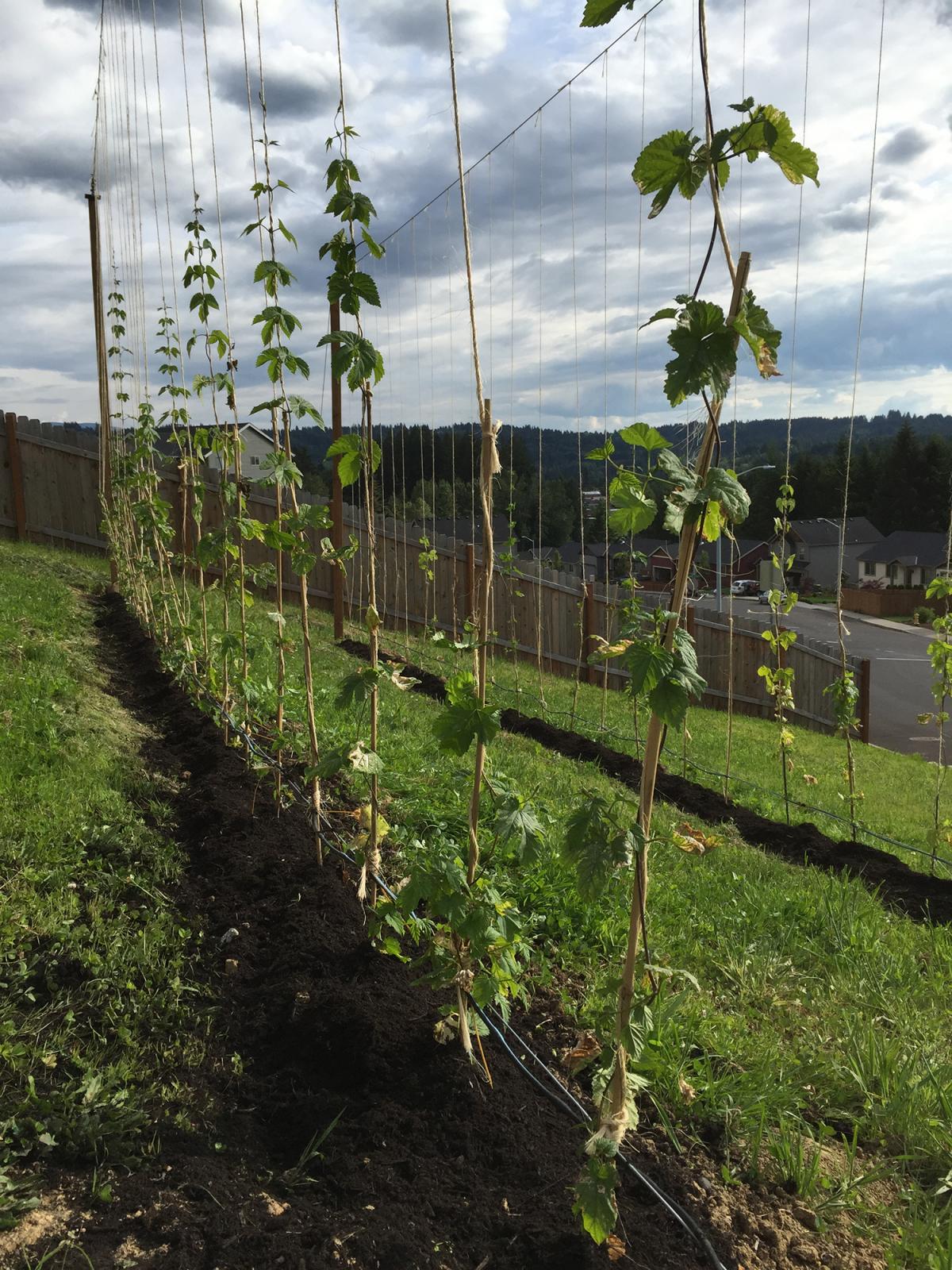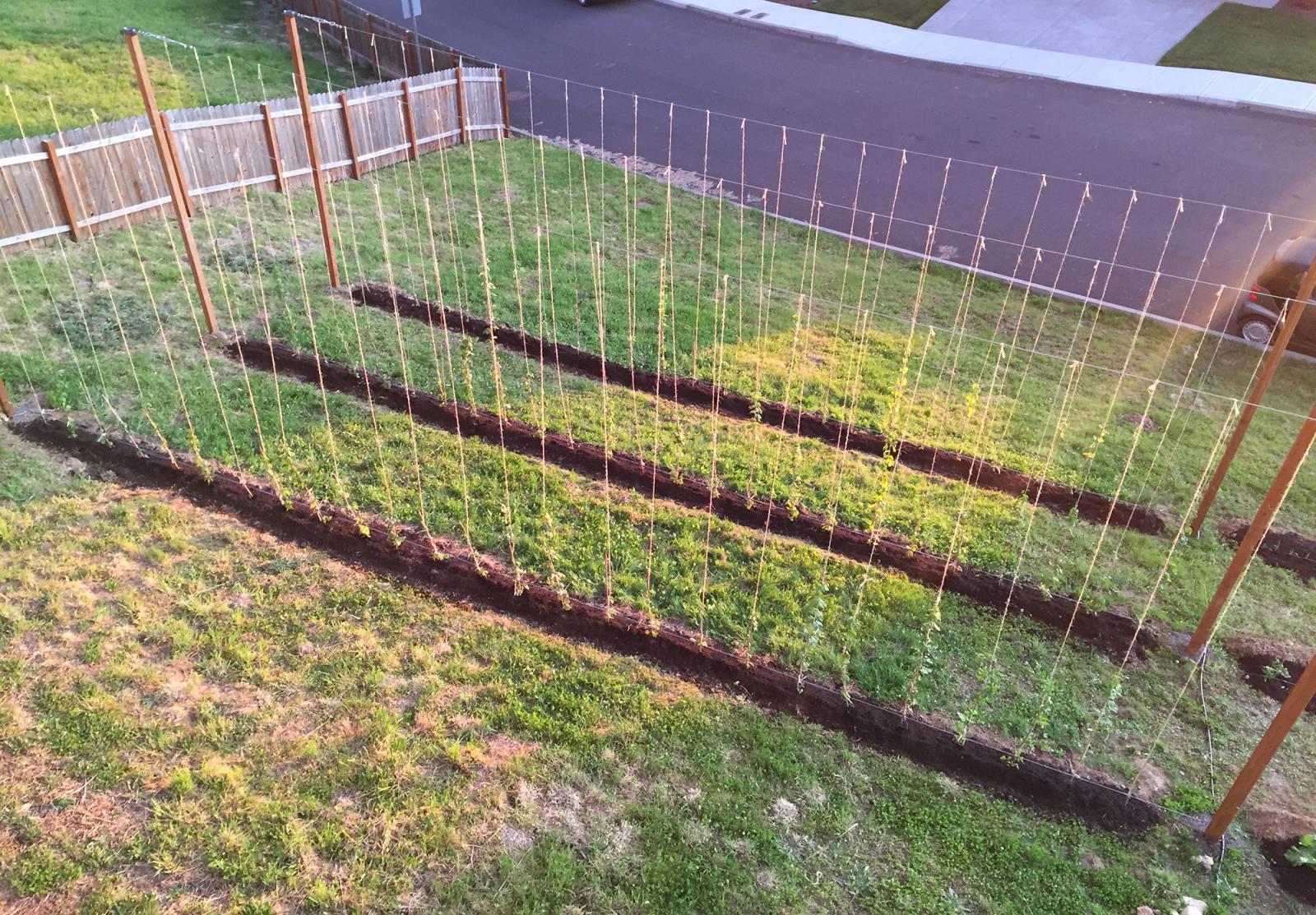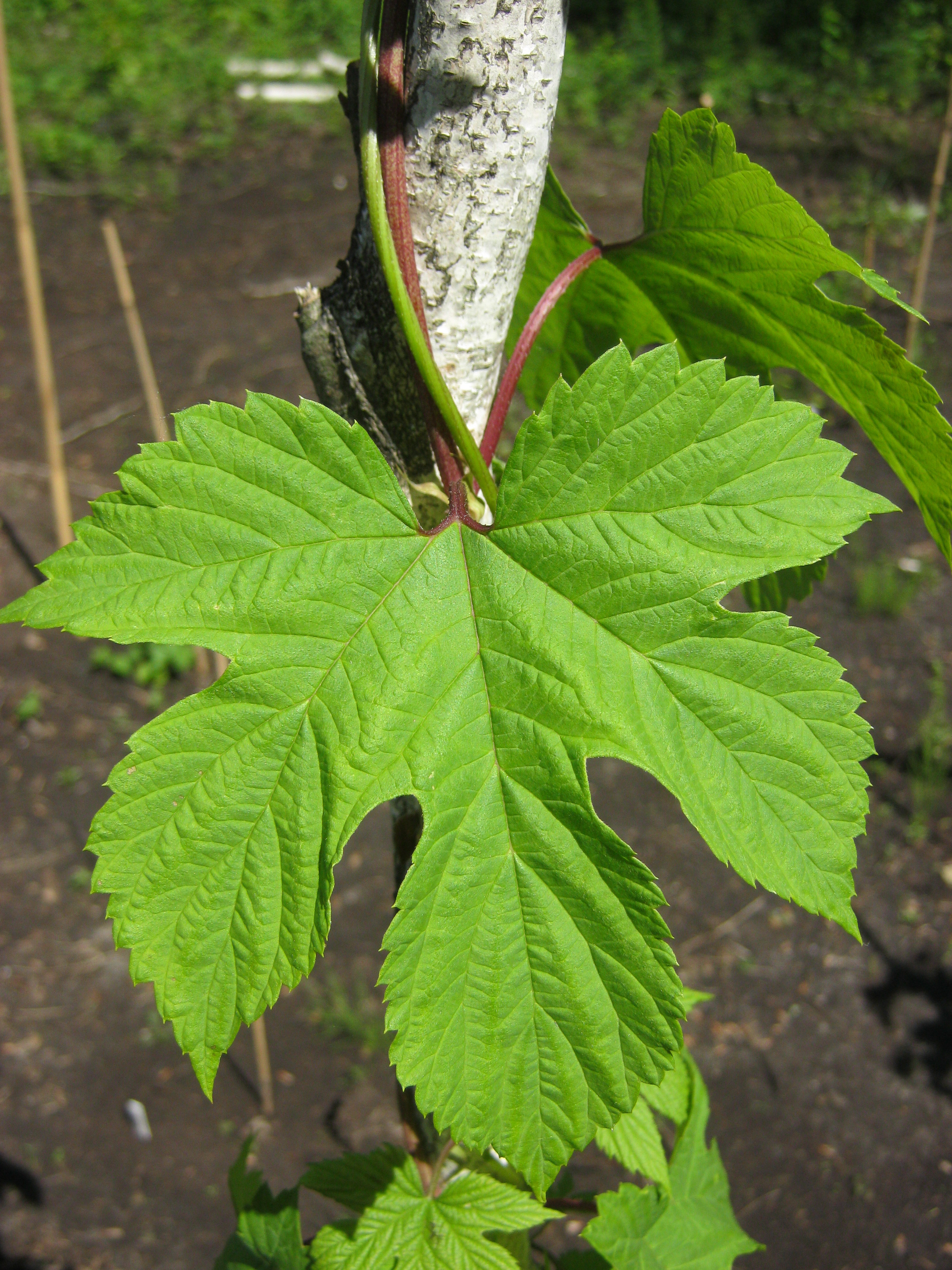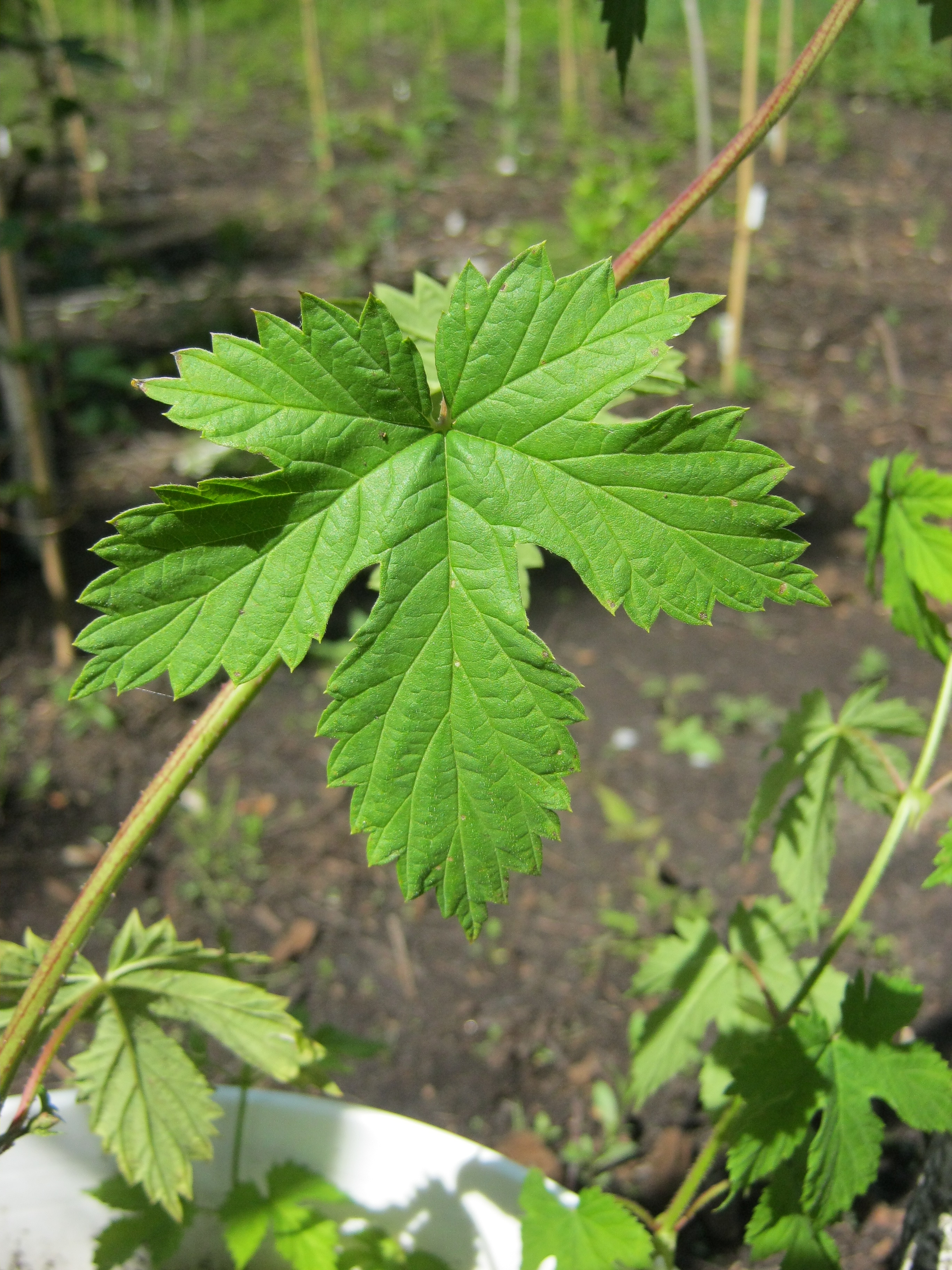You are using an out of date browser. It may not display this or other websites correctly.
You should upgrade or use an alternative browser.
You should upgrade or use an alternative browser.
Growing hops from seed
- Thread starter nagmay
- Start date

Help Support Homebrew Talk:
This site may earn a commission from merchant affiliate
links, including eBay, Amazon, and others.
PapaBearJay
Well-Known Member
- Joined
- Dec 5, 2012
- Messages
- 601
- Reaction score
- 198
Life will find a way!
ffaoe
Well-Known Member
To the hop breeders out there,
A little bit about my setup and process, followed by a few questions.
I currently have 11 seedlings planted in either 4 or 6 inch pots. Each plant is between 1 and 2 inches at the moment. I intend to keep all my hop plants in large pots or buckets for the next few years. The seedlings are currently in commercial grade seed starting mix. The mix I have been using for my crowns is 5 parts miracle grow potting mix and 1 part Bumper Crop soil amendment. During the bine growing period I use standard Miracle-Gro. During the cone development period I use Super Bloom. I also use SuperThrive after transplanting to help reduce shock.
1. Should I keep the seedlings in their current size pots for their first season, or should I transfer them into 1.5 gallon pots once they get a little bigger?
2. Is there anything needed of me to do their first season besides train them up the lines?
3. Is there any special fertilizing schedule I should follow for the seedlings?
4. Any other helpful tips?
Thanks
A little bit about my setup and process, followed by a few questions.
I currently have 11 seedlings planted in either 4 or 6 inch pots. Each plant is between 1 and 2 inches at the moment. I intend to keep all my hop plants in large pots or buckets for the next few years. The seedlings are currently in commercial grade seed starting mix. The mix I have been using for my crowns is 5 parts miracle grow potting mix and 1 part Bumper Crop soil amendment. During the bine growing period I use standard Miracle-Gro. During the cone development period I use Super Bloom. I also use SuperThrive after transplanting to help reduce shock.
1. Should I keep the seedlings in their current size pots for their first season, or should I transfer them into 1.5 gallon pots once they get a little bigger?
2. Is there anything needed of me to do their first season besides train them up the lines?
3. Is there any special fertilizing schedule I should follow for the seedlings?
4. Any other helpful tips?
Thanks
@ffaoe,
1) You really should move them to bigger pots at some point. 4" pots dry out very quickly. I've lost a few this way. You also need to consider how much the roots grow the first year. Here is a pic of the root system on one of my one-year-olds from seed: https://www.homebrewtalk.com/showpost.php?p=6718741&postcount=215
2) Re-potting and training is a good start. Given optimal conditions, they very well could flower the first year. Keep your eye out for the male flower pods.
3) Seems like you have the ferts figured out.
My only suggestion is to try to be consistent between the plants when it comes to pot size, sun exposure, and fertilization. This way you can compare the plants to each other. Otherwise, you won't know if that best looking plant is due to superior genetics, or just better care.
Cheers!
1) You really should move them to bigger pots at some point. 4" pots dry out very quickly. I've lost a few this way. You also need to consider how much the roots grow the first year. Here is a pic of the root system on one of my one-year-olds from seed: https://www.homebrewtalk.com/showpost.php?p=6718741&postcount=215
2) Re-potting and training is a good start. Given optimal conditions, they very well could flower the first year. Keep your eye out for the male flower pods.
3) Seems like you have the ferts figured out.
My only suggestion is to try to be consistent between the plants when it comes to pot size, sun exposure, and fertilization. This way you can compare the plants to each other. Otherwise, you won't know if that best looking plant is due to superior genetics, or just better care.
Cheers!

$20.94
$29.99
The Brew Your Own Big Book of Clone Recipes: Featuring 300 Homebrew Recipes from Your Favorite Breweries
Amazon.com

$33.99 ($17.00 / Count)
$41.99 ($21.00 / Count)
2 Pack 1 Gallon Large Fermentation Jars with 3 Airlocks and 2 SCREW Lids(100% Airtight Heavy Duty Lid w Silicone) - Wide Mouth Glass Jars w Scale Mark - Pickle Jars for Sauerkraut, Sourdough Starter
Qianfenie Direct
![Craft A Brew - Safale S-04 Dry Yeast - Fermentis - English Ale Dry Yeast - For English and American Ales and Hard Apple Ciders - Ingredients for Home Brewing - Beer Making Supplies - [1 Pack]](https://m.media-amazon.com/images/I/41fVGNh6JfL._SL500_.jpg)
$6.95 ($17.38 / Ounce)
$7.47 ($18.68 / Ounce)
Craft A Brew - Safale S-04 Dry Yeast - Fermentis - English Ale Dry Yeast - For English and American Ales and Hard Apple Ciders - Ingredients for Home Brewing - Beer Making Supplies - [1 Pack]
Hobby Homebrew

$172.35
2 Inch Tri Clamp Keg Manifold With Ball Lock Posts, Pressure Gauge, PRV (0-30 PSI) – Homebrew, Fermentation, Kegging System
wuhanshijiayangzhiyimaoyiyouxiangongsi

$7.79 ($7.79 / Count)
Craft A Brew - LalBrew Voss™ - Kveik Ale Yeast - For Craft Lagers - Ingredients for Home Brewing - Beer Making Supplies - (1 Pack)
Craft a Brew

$176.97
1pc Commercial Keg Manifold 2" Tri Clamp,Ball Lock Tapping Head,Pressure Gauge/Adjustable PRV for Kegging,Fermentation Control
hanhanbaihuoxiaoshoudian

$28.98
Five Star - 6022b_ - Star San - 32 Ounce - High Foaming Sanitizer
Great Fermentations of Indiana

$53.24
1pc Hose Barb/MFL 1.5" Tri Clamp to Ball Lock Post Liquid Gas Homebrew Kegging Fermentation Parts Brewer Hardware SUS304(Gas MFL)
Guangshui Weilu You Trading Co., Ltd

$53.24
1pc Hose Barb/MFL 1.5" Tri Clamp to Ball Lock Post Liquid Gas Homebrew Kegging Fermentation Parts Brewer Hardware SUS304(Liquid Hose Barb)
yunchengshiyanhuqucuichendianzishangwuyouxiangongsi

$76.92 ($2,179.04 / Ounce)
Brewing accessories 1.5" Tri Clamp to Ball Lock Post Liquid Gas Homebrew Kegging Fermentation Parts Brewer Hardware SUS304 Brewing accessories(Gas Hose Barb)
chuhanhandianzishangwu

$58.16
HUIZHUGS Brewing Equipment Keg Ball Lock Faucet 30cm Reinforced Silicone Hose Secondary Fermentation Homebrew Kegging Brewing Equipment
xiangshuizhenzhanglingfengshop

$719.00
$799.00
EdgeStar KC2000TWIN Full Size Dual Tap Kegerator & Draft Beer Dispenser - Black
Amazon.com

$479.00
$559.00
EdgeStar KC1000SS Craft Brew Kegerator for 1/6 Barrel and Cornelius Kegs
Amazon.com

$22.00 ($623.23 / Ounce)
AMZLMPKNTW Ball Lock Sample Faucet 30cm Reinforced Silicone Hose Secondary Fermentation Homebrew Kegging joyful
无为中南商贸有限公司

$19.99
$22.99
How To Brew: Everything You Need to Know to Brew Great Beer Every Time
Simon & Schuster Digital Sales LLC

$11.99
DERNORD 1/2 Inch Stainless Steel Quick Disconnect Set - Beer Brewing Connector Kit (Barb Female/FPT Male)
denuodianqiyouxiangongsi

$10.99 ($31.16 / Ounce)
Hornindal Kveik Yeast for Homebrewing - Mead, Cider, Wine, Beer - 10g Packet - Saccharomyces Cerevisiae - Sold by Shadowhive.com
Shadowhive

$44.99
$49.95
Craft A Brew - Mead Making Kit – Reusable Make Your Own Mead Kit – Yields 1 Gallon of Mead
Craft a Brew
ffaoe
Well-Known Member
@nagmay
Thanks for the advice. I will definitely be repotting to much larger pots within the next few weeks. I will be sure to plant each in identical sized pots this time to ensure consistency. With any luck, I will end up with a few boys to cross-breed.
That was some amazing crown growth you had for a first year plant. If I was simply shown that picture I would have said it was a third year plant.
Thanks
Thanks for the advice. I will definitely be repotting to much larger pots within the next few weeks. I will be sure to plant each in identical sized pots this time to ensure consistency. With any luck, I will end up with a few boys to cross-breed.
That was some amazing crown growth you had for a first year plant. If I was simply shown that picture I would have said it was a third year plant.
Thanks
ffaoe
Well-Known Member
I was checking my seedlings out in the greenhouse today and noticed two of them looked a little different. One had two shoots, and the other had three. I must have damaged them when transplanting. Adds character, right?


Checked on the hopyard. They look a little beaten, but some are starting to take off. Several are already over my head. Other ones, whose main bine was damaged, have started popping out new shoots from the soil. Only 6 seemed completely dead. Another load of compost was added to help them along.
I also had time to inventory the plants. It’s interesting to see which crosses were the most prolific. I pollinated all of the female plants in my yard evenly, but the germination/survival rates were anything but: Lot’s of Nugget. Very few Cascade or Sterling. No surviving Willamette, or Mt Hood (not surprisingly).
I also had time to inventory the plants. It’s interesting to see which crosses were the most prolific. I pollinated all of the female plants in my yard evenly, but the germination/survival rates were anything but: Lot’s of Nugget. Very few Cascade or Sterling. No surviving Willamette, or Mt Hood (not surprisingly).
- 30 x Nugget
- 16 x Chinook
- 13 x Galena
- 7 x Magnum/Cascade
- 6 x Pride of Ringwood
- 4 x Magnum/Chinoook
- 2 x Cascade
- 1 x Sterling
alane1
Well-Known Member
I was doing a little weeding and noticed these along the bases of my bines. At first glance I dismissed them as rhizomes but on closer inspection I realized rhizomes don't have any cotyledon View attachment ImageUploadedByHome Brew1432247138.953129.jpgView attachment ImageUploadedByHome Brew1432247163.792608.jpgView attachment ImageUploadedByHome Brew1432247182.136027.jpg
PapaBearJay
Well-Known Member
- Joined
- Dec 5, 2012
- Messages
- 601
- Reaction score
- 198
Mother nature!
I was doing a little weeding and noticed these along the bases of my bines. At first glance I dismissed them as rhizomes but on closer inspection I realized rhizomes don't have any cotyledon
My guy must have been on viagra last year as I've got seedlings coming up all over the property! Happy Hopping~
ffaoe
Well-Known Member
There's something strange with #8.
When I was wrapping this little guy or girl up its twine I noticed something strange about the shoot. That set has three leaves and tiny shoot opposite the middle leaf that is not a new shoot but a small leaf on the terminating end.
I know its nothing to be concerned with, its just strange seeing.
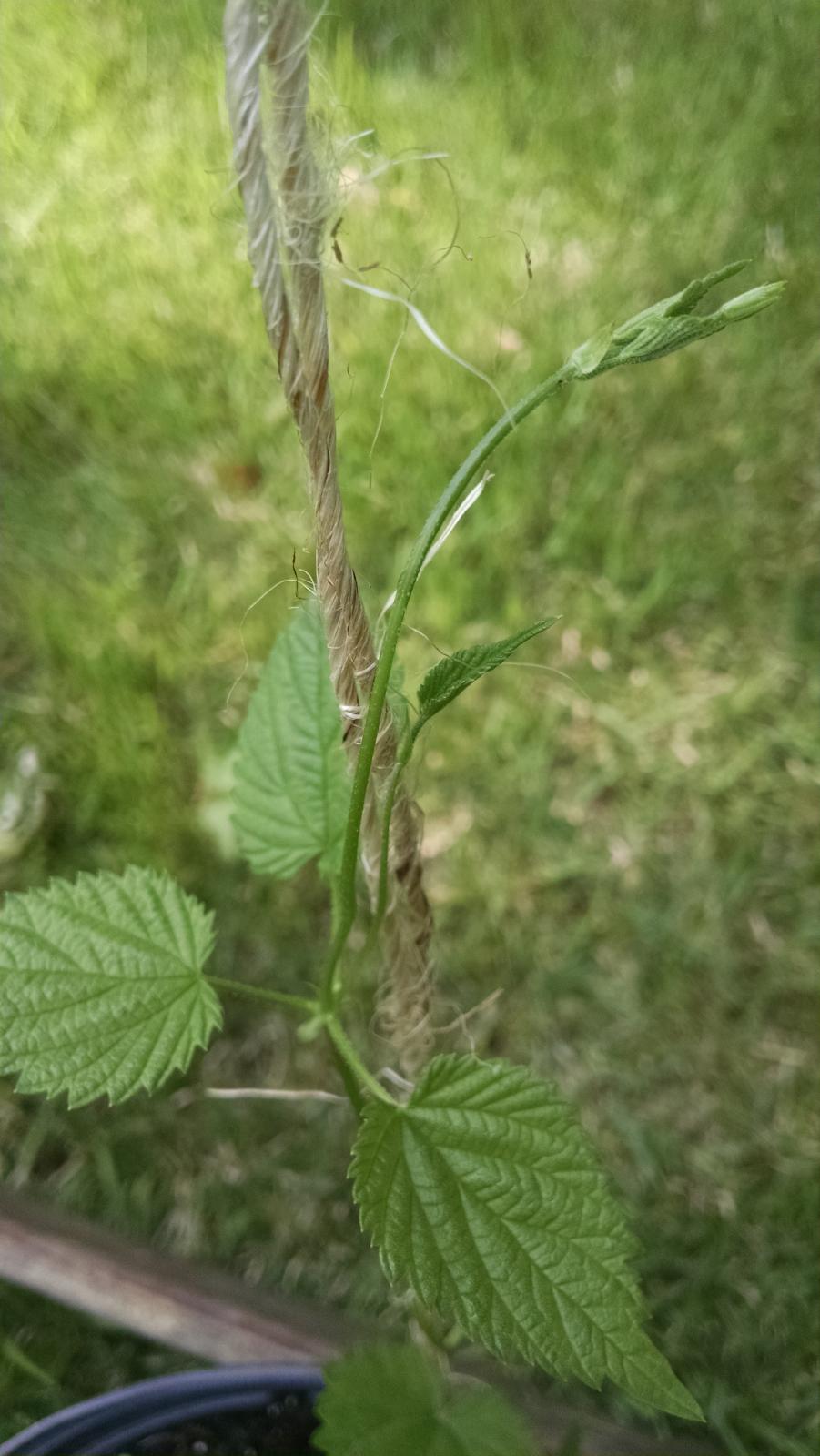
When I was wrapping this little guy or girl up its twine I noticed something strange about the shoot. That set has three leaves and tiny shoot opposite the middle leaf that is not a new shoot but a small leaf on the terminating end.
I know its nothing to be concerned with, its just strange seeing.

A couple of last year's graduates in their first full growing season showing some impressive sidearm production. It'd be really cool if the hops actually made tasty beer, haha! We'll have to wait another couple months to find out.
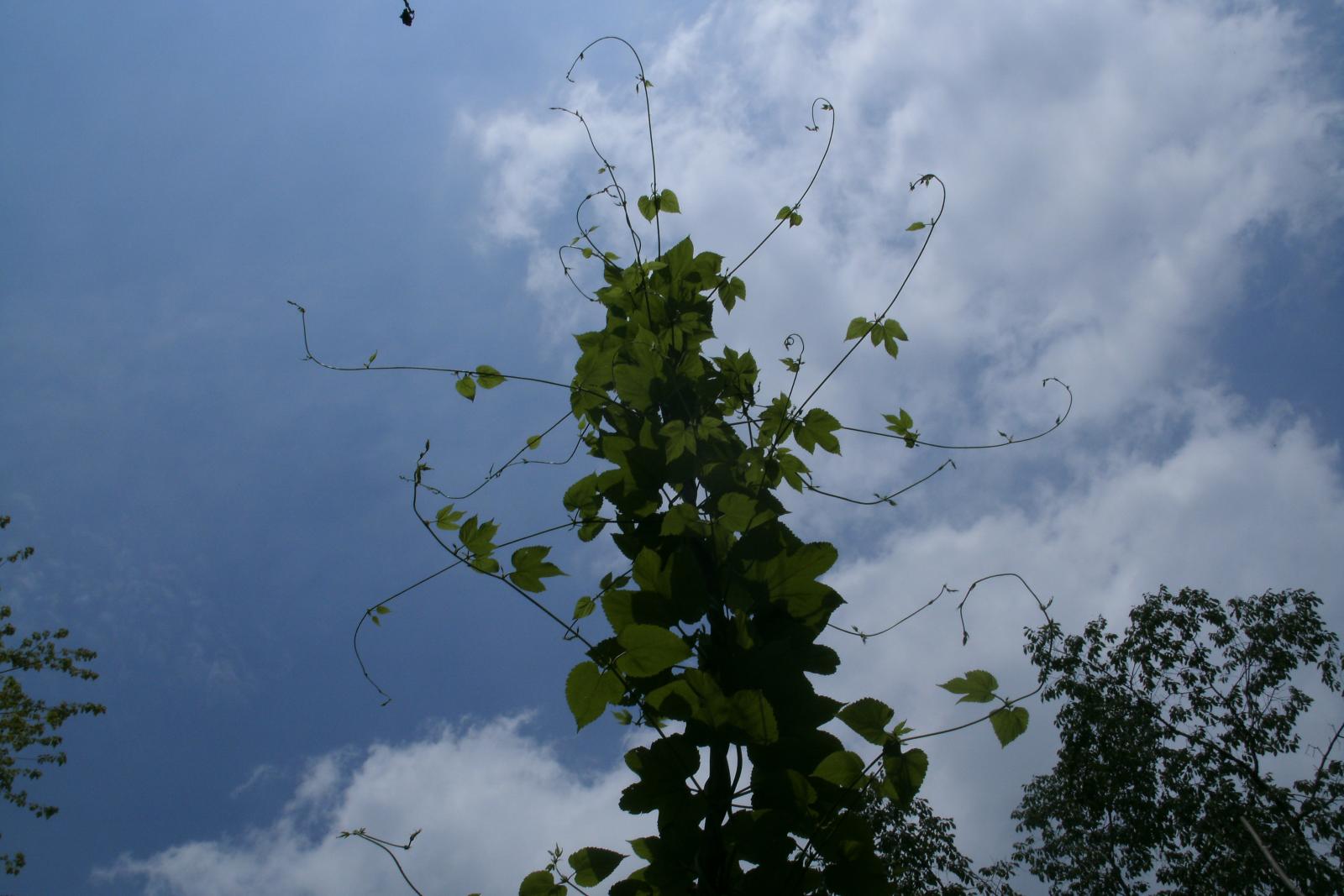



DarkCoder
Well-Known Member
A couple of last year's graduates in their first full growing season showing some impressive sidearm production. It'd be really cool if the hops actually made tasty beer, haha! We'll have to wait another couple months to find out.
You should call it "Squiddly Diddly" if you keep it. :fro:
I also visited my 2nd year hops a few evenings ago. Too dark for good pics, but the sidearm growth looked promising. I topped the ones that had reached the top of the trellis. My hope is to keep them untangled for ease of sorting/testing.


Looks like you're only training two per string? I like loading them up, bigger harvest per crown . . . just me though?
Didn't limit the number of bines - the one on the end just looks that way, since the first two bines were so large. They are probably bulls, but I'll let them go for this year.
You'll notice that the second one is just getting started. All the conditions were the same, but it stayed dormant until the weather started getting really warm.
Overall, the growth of each plant has been quite unique. It should be interesting to watch them progress.
DarkCoder
Well-Known Member
Do you find that the ones with the red petioles have a more pale-greenish color to them? Also, the leaf in the third picture looks like it's got some light colored lesions developing on it. I'd keep an eye on that one.
DarkCoder
Well-Known Member
Do you find that the ones with the red petioles have a more pale-greenish color to them? Also, the leaf in the third picture looks like it's got some light colored lesions developing on it. I'd keep an eye on that one.
Yeah, I know for the plant in the third picture... it's downy mildew spots. I have put a comments about it in my album.
About the red petioles... not necessarily. I have some plants coming from the wild that the leaves are dark green and the petiole / stems are deep red.
Fourth picture is a bicoloured leaves. Very nice looking plant.
Stopped by the hop yard last night and found that many of the plants are starting to display their sex. I pulled a few of the obvious boys, but will need to go back next week for a closer inspection. Doing my best to keep the cones from getting pollinated - as I'd like to get some chemical analysis done.


The second year plants all have burrs, but two of them are really showing off - thousands and thousands of cones starting to form.
This one is NHB015 (Magnum x Cascade). With a little luck, each of those fuzzy-lady-parts will turn into the same beautiful cones I saw last year (below).
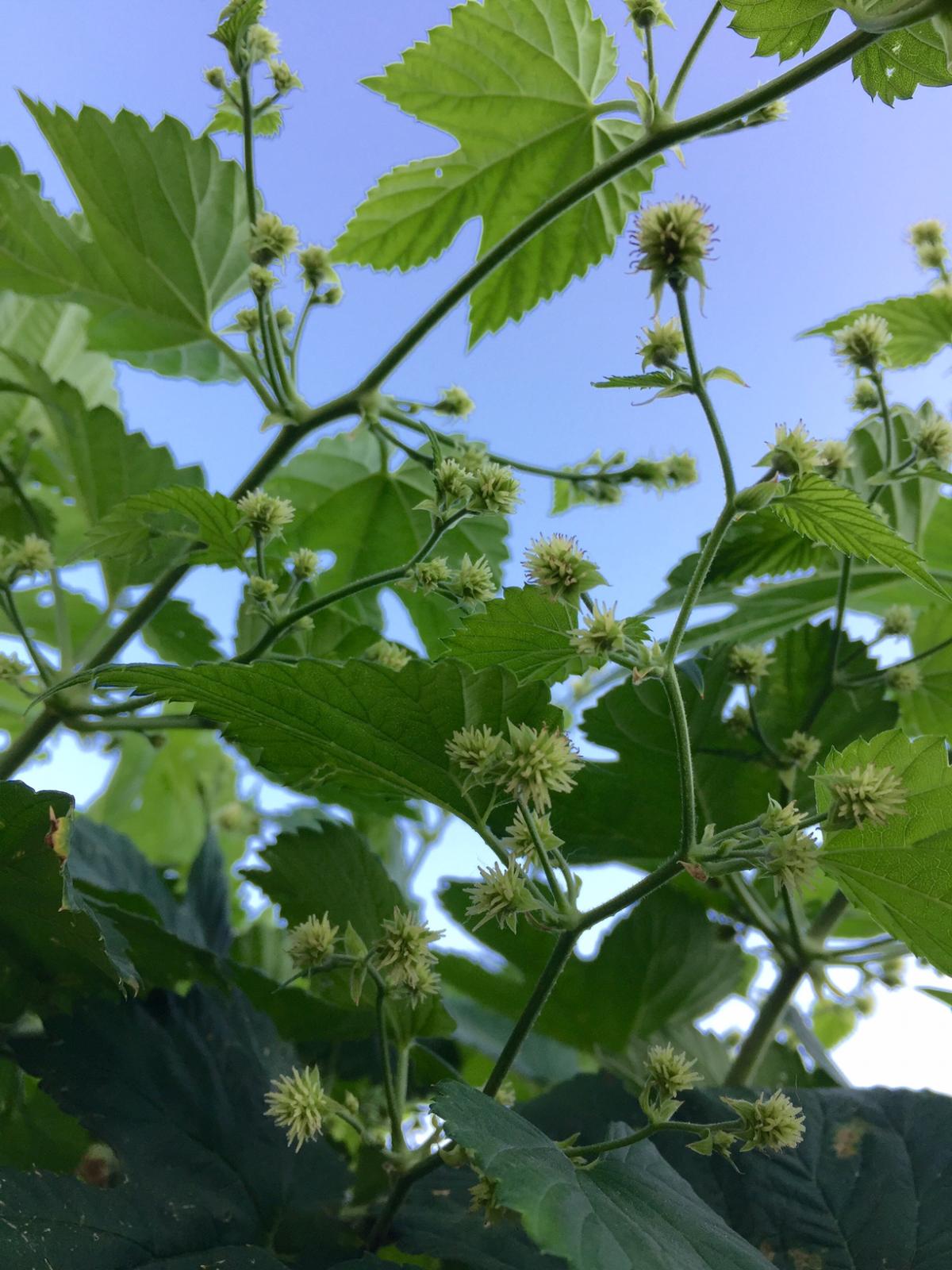

This one is NHB015 (Magnum x Cascade). With a little luck, each of those fuzzy-lady-parts will turn into the same beautiful cones I saw last year (below).


On the 4th, we visited the other hop yard, where all the first-year plants are. I was pleasantly surprised.
The soil here isn't that great, and it's been a month since my last visit. I came armed with fertilizer and ladybugs, but they weren't needed. Most of the 80 plants are dark green. Many have already reached beyond the top of the 16' trellis. I culled a dozen showing male flowers and had a tough time getting them out. The plants have already sent large tap roots into the tough clay.
About a dozen plants are showing burrs. A few have small cones already forming. The nugget, chinook, and galena crosses seem to be ahead of the pack in terms of size and maturity - but it really varies from plant to plant (as expected).
I took extensive notes on a pad of paper, but they got ruined during an impromptu water fight with some of the local kids... So, I'll have to go back out and redo that part.




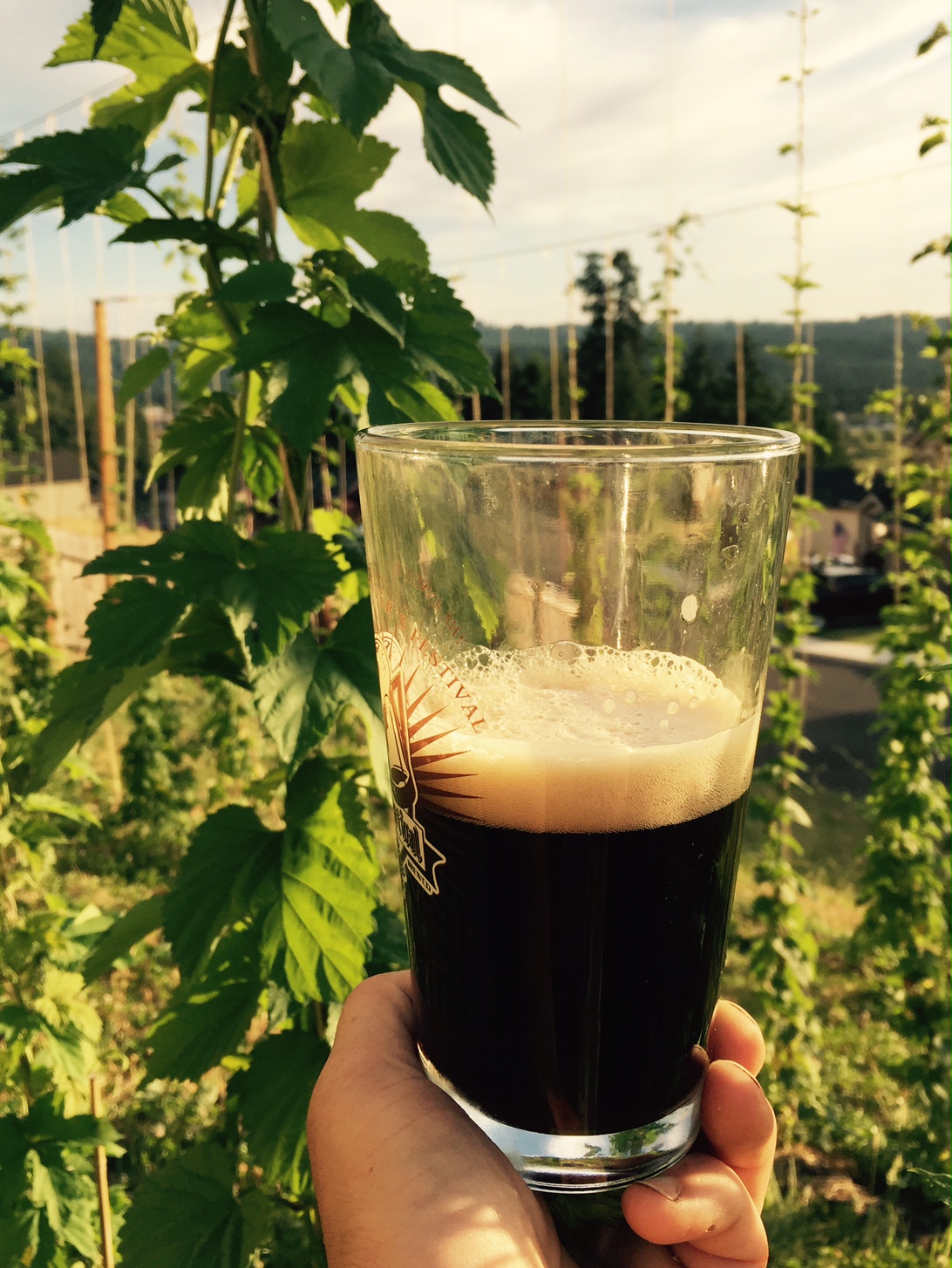
The soil here isn't that great, and it's been a month since my last visit. I came armed with fertilizer and ladybugs, but they weren't needed. Most of the 80 plants are dark green. Many have already reached beyond the top of the 16' trellis. I culled a dozen showing male flowers and had a tough time getting them out. The plants have already sent large tap roots into the tough clay.
About a dozen plants are showing burrs. A few have small cones already forming. The nugget, chinook, and galena crosses seem to be ahead of the pack in terms of size and maturity - but it really varies from plant to plant (as expected).
I took extensive notes on a pad of paper, but they got ruined during an impromptu water fight with some of the local kids... So, I'll have to go back out and redo that part.





Those were actually the seedlings you started back in Feb? If so, nice work! I've got a few up about 10 feet and are showing their sex but I guess that's to be expected from letting them come up naturally. They usually don't come up until/around early April. ps: that view somehow reminds me of looking toward the Willamette. Really liked my visits to Portland!
Those were actually the seedlings you started back in Feb?
Yep. This yard was specifically set up for the first years. They are less than 6 months old.
You're very close on the view. These hops are out in Estacada, about an hour from my house in Portland. They are on a steep hillside facing west toward the Clackamas river - which eventually feeds into the Willamette.
This weekend we sat among the hops, drank homebrew ... and after an incredible sunset, we had perfect seats for the local fireworks.

Right on. There's a cool place up the hill from Estacada called Liberty Natural. He deals essential oils and was distilling his own lavender and clary sage the last time I was out.
Definitely a great area to be growing hops!
Definitely a great area to be growing hops!
ffaoe
Well-Known Member
So today most of the flowers on my first male hop plant open up so I started cross breeding. I wasn't entirely sure the best method for hand pollinating. What I did was cut clusters of male flowers and brush them against clusters of burrs. I then tagged the groups of burrs. I did this for my centennial and brewer's gold plants. The burrs on the centennial were very close to the bine so I was unable to place a protective bread bag over top like I did for my brewer's gold. I have a second male plant that looks like it should flower next week and will repeat the process.
Any reason why my method should not work?
Edit: 7/18/15
Tried the paint brush method today which worked surprisingly well. I used a cheapo plastic watercolor brush to dust the pollen from several flowers into a 2 dram glass vial. I then brushed the pollen onto burrs of a female. The pollen is very easy to see on the black plastic brush bristles.
Any reason why my method should not work?
Edit: 7/18/15
Tried the paint brush method today which worked surprisingly well. I used a cheapo plastic watercolor brush to dust the pollen from several flowers into a 2 dram glass vial. I then brushed the pollen onto burrs of a female. The pollen is very easy to see on the black plastic brush bristles.
New sprouts! Yes, these are from the same batch of seed that was started back in February
Some of the seeds germinated in the first week. Over the next few months many more popped up. After a long lull, I threw the remaining seed in a tray and set it aside. So, I was pleasantly surprised last week to see brand new sprouts.
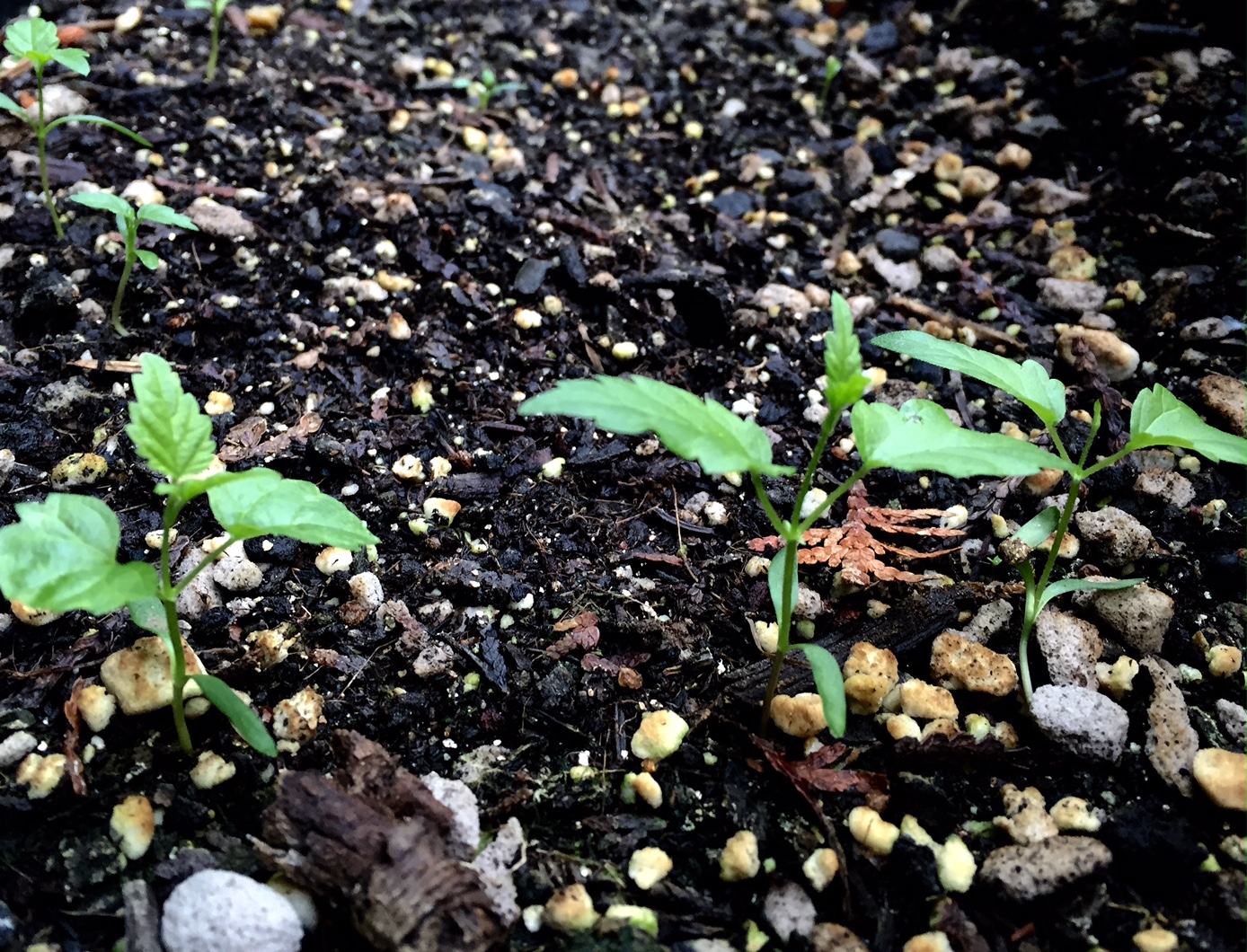
Some of the seeds germinated in the first week. Over the next few months many more popped up. After a long lull, I threw the remaining seed in a tray and set it aside. So, I was pleasantly surprised last week to see brand new sprouts.

We stopped by the hop yard to check on the first-years.
Out of the 78 original plants: 10 died and 12 males were culled. The remaining 56 plants are all female. Some are still covered with burrs, while others have fully developed cones.

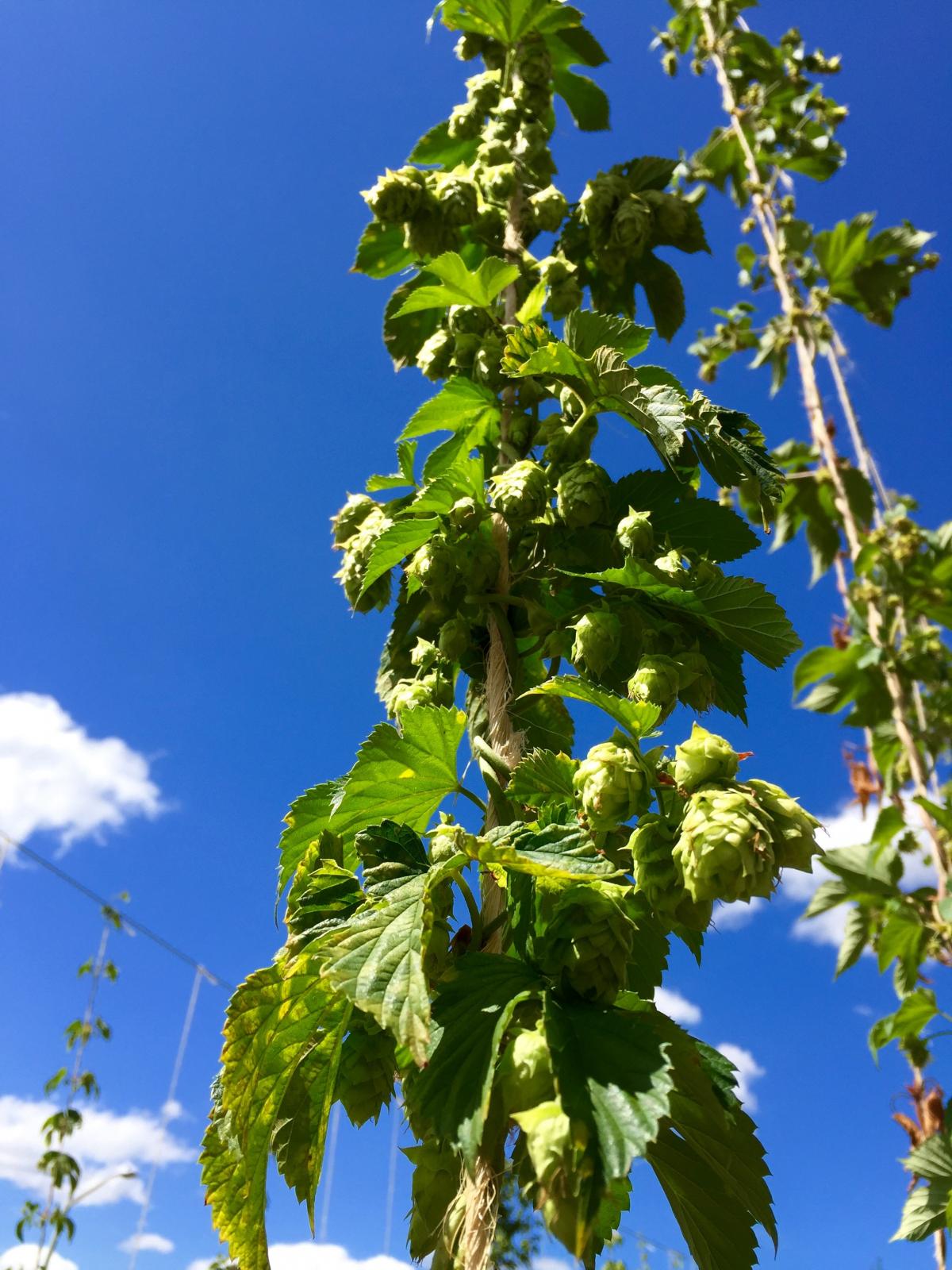

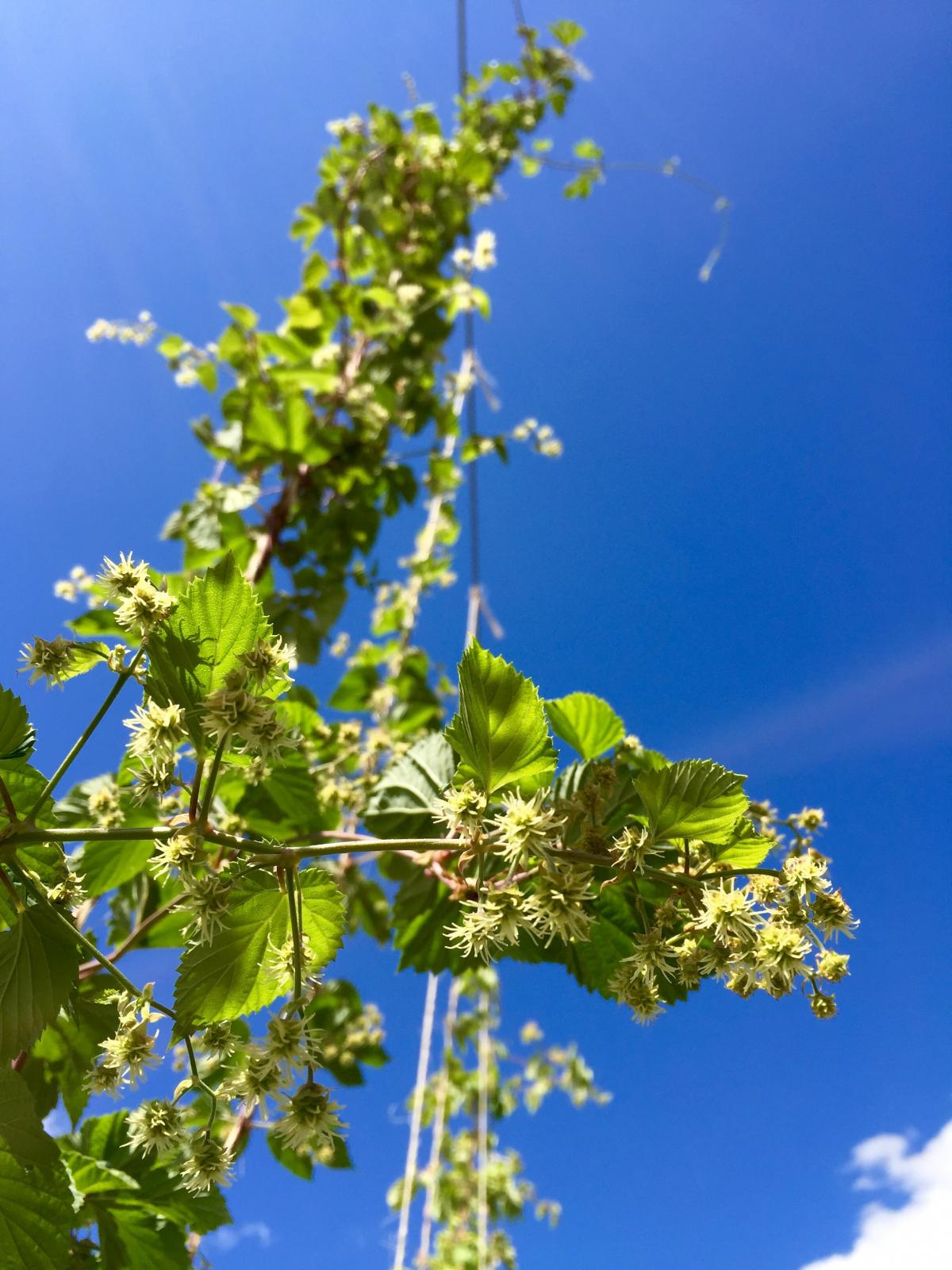
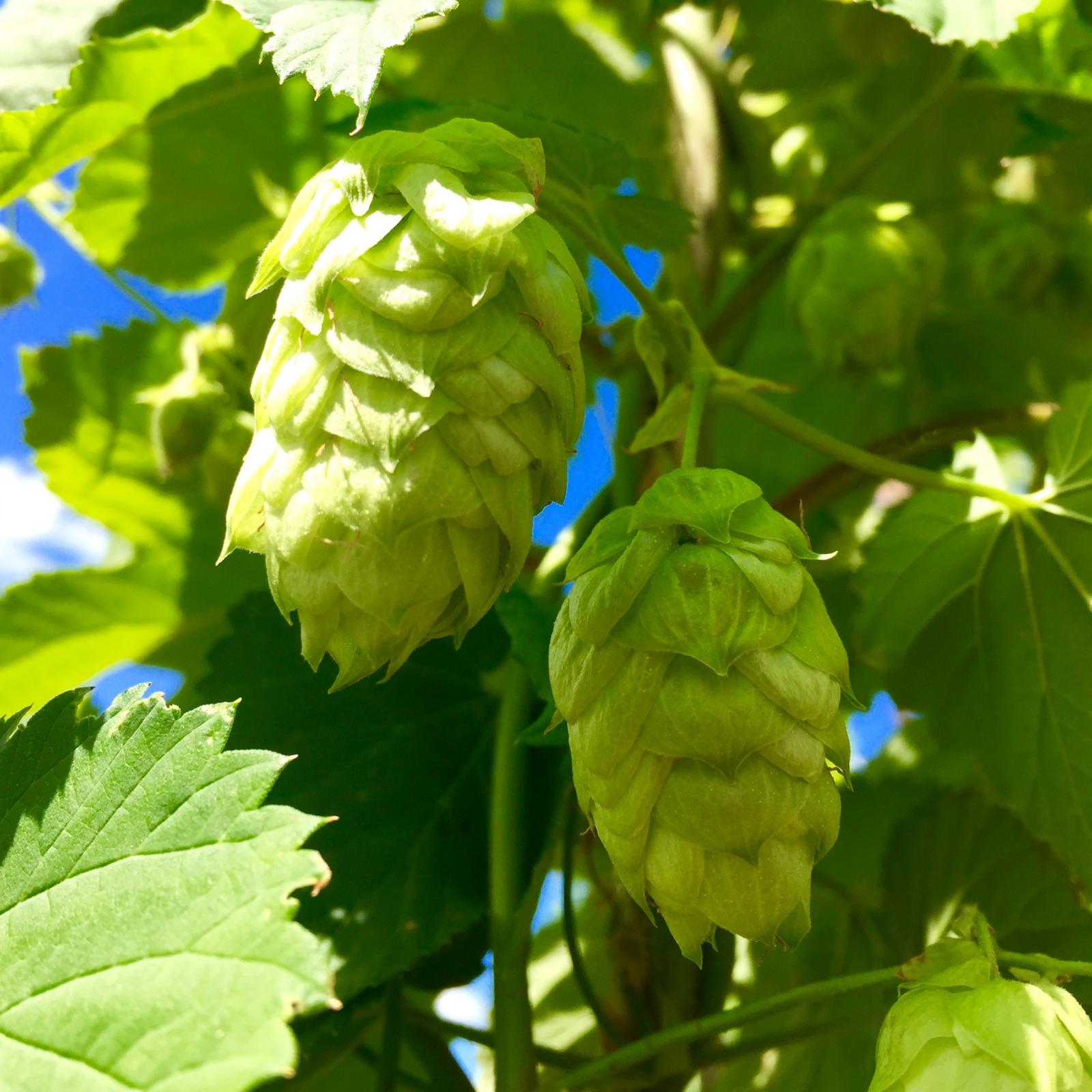

Out of the 78 original plants: 10 died and 12 males were culled. The remaining 56 plants are all female. Some are still covered with burrs, while others have fully developed cones.






There is also one special plant that I have been keeping my eye on. From the start, the leaves have been a bit different than all the rest - elongated and heavily toothed. There are also a number of leaves with two lobes (rather than the typical, 1,3,5 configuration).
I thought the plant might grow out of it, but the phenotype is still going strong in this one. So, I was especially excited to see burrs, confirming that she is a female.

I thought the plant might grow out of it, but the phenotype is still going strong in this one. So, I was especially excited to see burrs, confirming that she is a female.

alane1
Well-Known Member
@Nagmay- Do you plan on any brewing trials?
@Nagmay- Do you plan on any brewing trials?
The 8 plants that we selected to keep for this 2nd year all passed an initial round of brewing. Basically, we made a number of simple extract brews - switching up the hops each time. We tried to keep the procedures as exact as possible: http://gabriel.nagmay.com/2015/01/nhb00x/
But... those were 1st year plants. It will be interesting to do some more brewing this year and compare to my initial tasting notes.
Last night we stopped by the yard with the 2-year-olds. They are loaded with cones.
I am very excited about the prospects of getting these analyzed.
Way cool! How detailed are you going to get with analysis? Have you contacted OSU or using a private lab like this: http://www.karlabs.com/hops.htm
Way cool! How detailed are you going to get with analysis? Have you contacted OSU or using a private lab like this: http://www.karlabs.com/hops.htm
Looking into private labs. I'm open to suggestions if you have one to recommend.
The only testing I ever had done was a deal I had going with a fellow at OSU a long time ago who did alpha, beta and HSI on a few samples but have heard good things about Kar. Some growers I know in MI have dealings with: http://homepages.wmich.edu/~gzt8940/andre_venter/Hops.html and have had good results. Still up in the air though.
Have been going through some of this year's seedlings recently. The first three pics are of one of the volunteers that has a very appealing bright lemon character. The last two are of one of the seedlings from the Brewers Gold and looks to have a propensity for angle wings? Of all those seedlings that I kept, they all retained most of the aroma character from their mom and are just as greasy as she is!
Also, I noticed that in the background of the 4th picture is the Canadian Redvine so I included it last, good for nothing hop other than to cover things up with, ha! That shows most of the upper half of it.



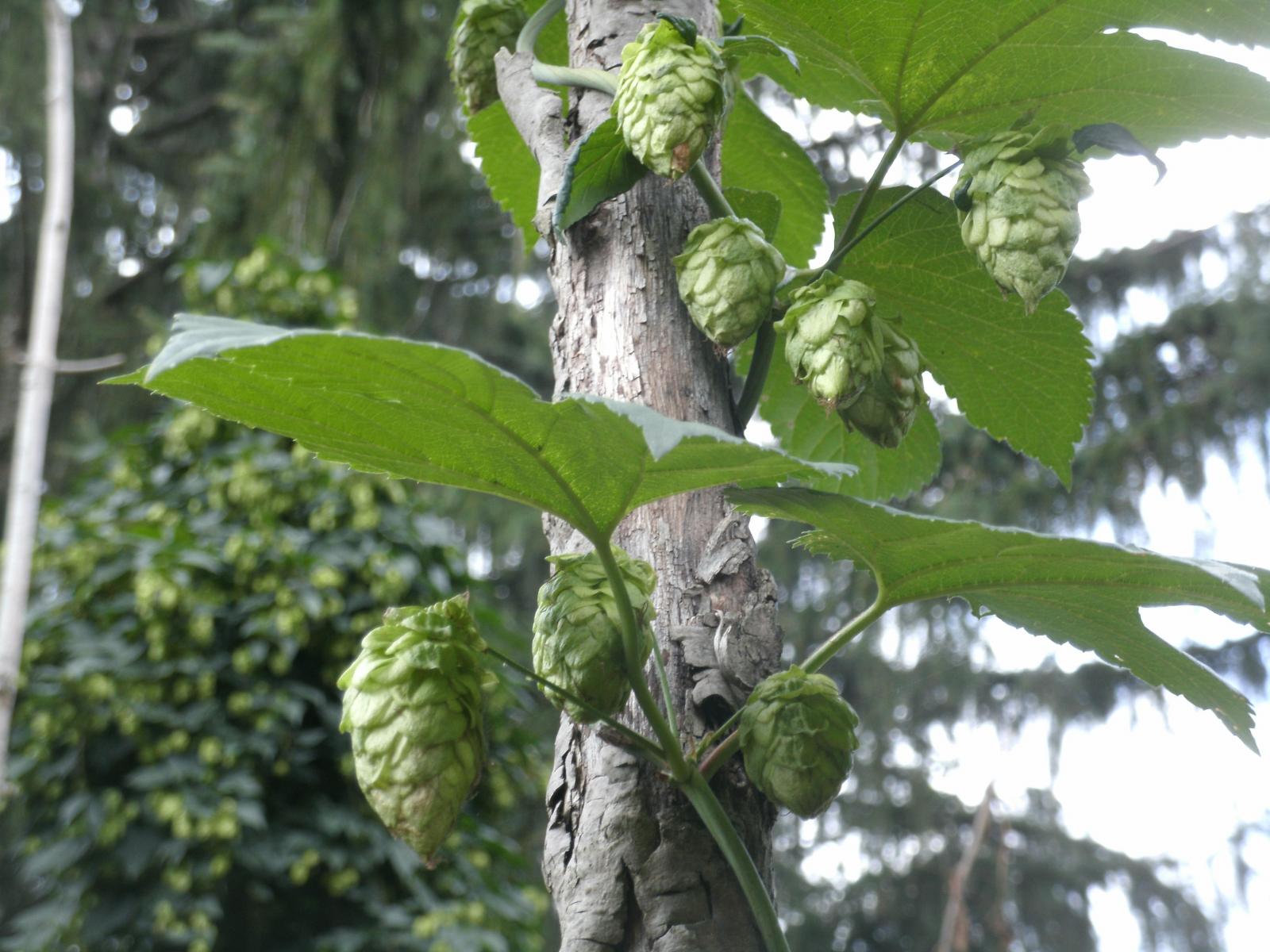
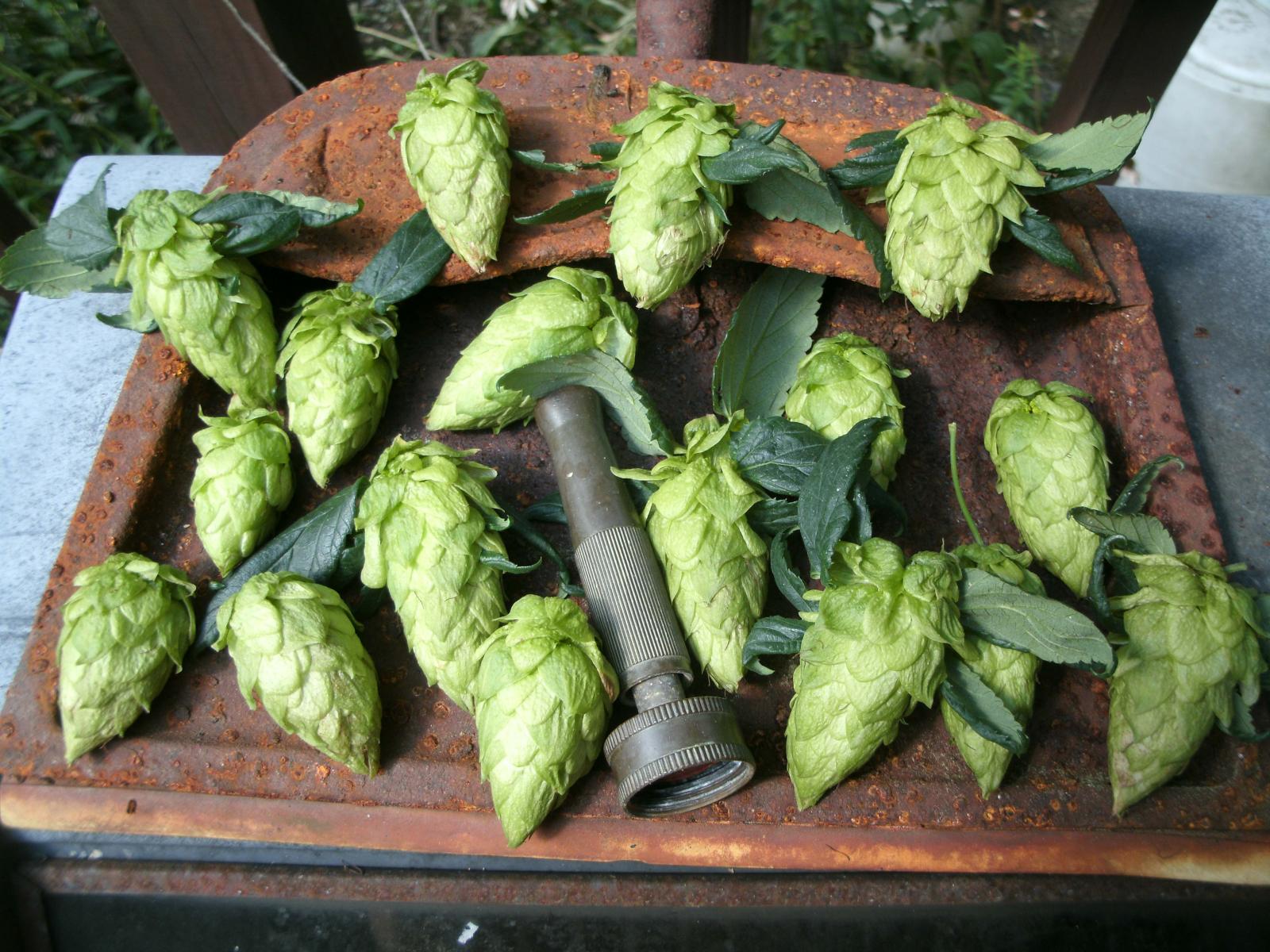

Have been going through some of this year's seedlings recently. The first three pics are of one of the volunteers that has a very appealing bright lemon character. The last two are of one of the seedlings from the Brewers Gold and looks to have a propensity for angle wings? Of all those seedlings that I kept, they all retained most of the aroma character from their mom and are just as greasy as she is!
Also, I noticed that in the background of the 4th picture is the Canadian Redvine so I included it last, good for nothing hop other than to cover things up with, ha! That shows most of the upper half of it.






Similar threads
- Replies
- 4
- Views
- 4K
- Replies
- 17
- Views
- 3K









































